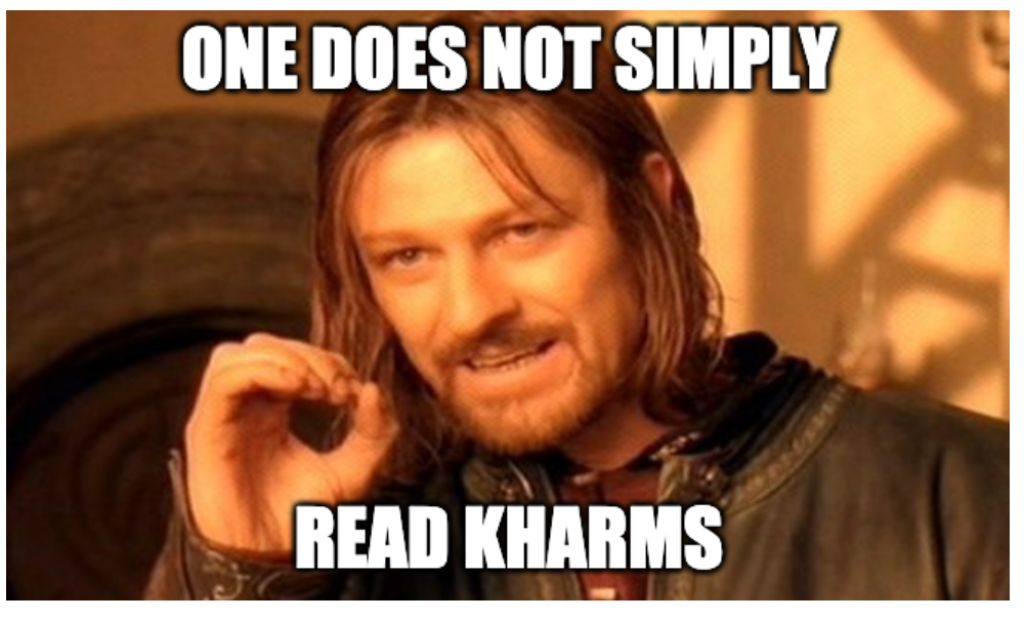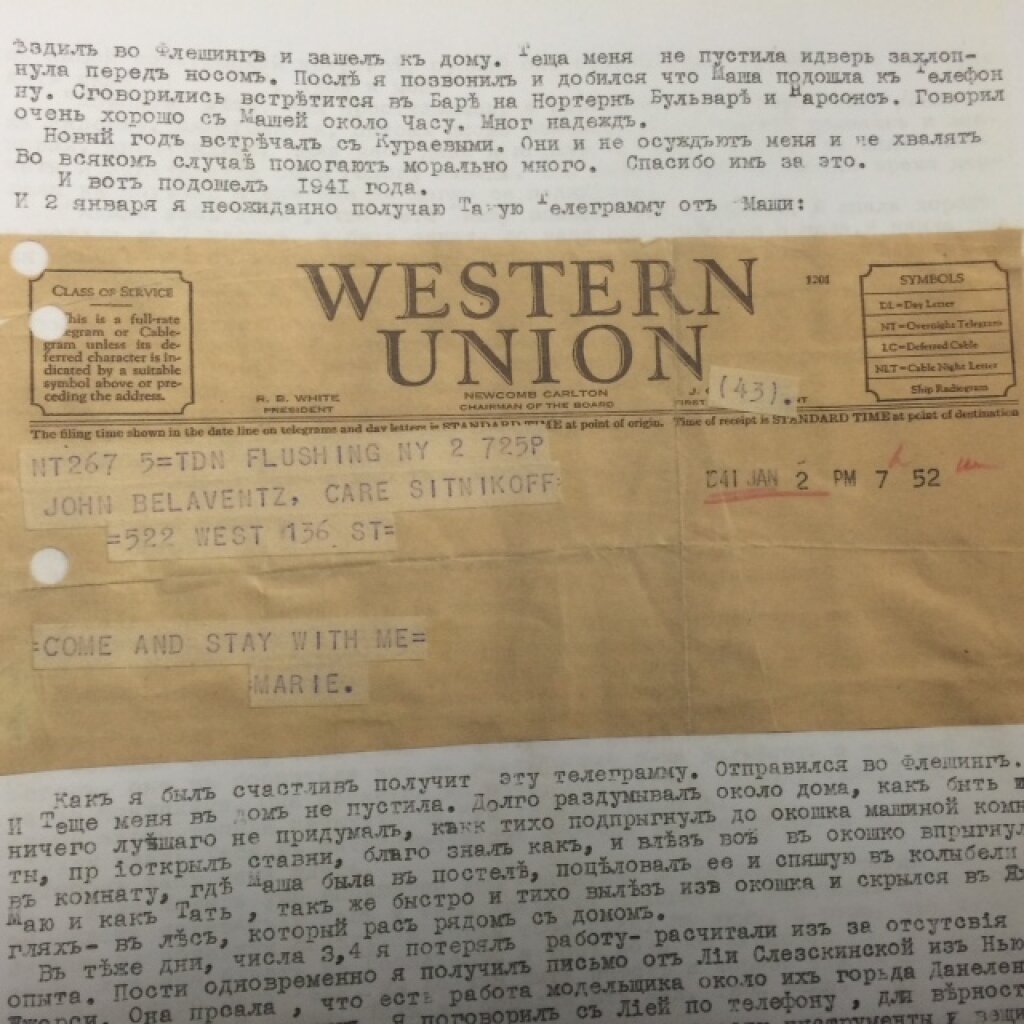Charlie Smith is a Ph.D. candidate at the University of Illinois at Chicago, where he is working on a dissertation that theorizes what he calls "Russian Surrealism." In his spare time, he translates the works of the chinari and horror writer Yurii Mamleev.
It was not a desire to translate that compelled me to begin translating the chinari — the self-designation, derived from the word chin [rank], of a loose group of poets and philosophers that included Daniil Kharms, Leonid and Tamara Lipavsky, Yakov Druskin, and Alexander Vvedensky — but rather a desire to read them, full stop. How can a non-native speaker of Russian approach the following sentences, uttered by Kharms during one of many gatherings in the Lipavskys’ parlor:
My body is corrupted. Yesterday when I got out of bed, my nose suddenly began gushing with blood and milk [krov’ s molokom].
A native speaker would likely enjoy the advantage of recognizing that last expression as a colloquial description of beautiful skin, found perhaps on a cherubic boy or young maiden (Nabokov shivers at the thought of alternative translations). But even a native speaker might be disoriented by the expression's strange literalism here. One does not merely read Kharms, or any of the chinari. Translation of some sort, at all levels, is a necessity for understanding the text.
An additional factor is the existence of multiple English-language translations of the chinari's work, especially in the cases of Kharms and the poet Alexander Vvedensky. Through the efforts of scholars like Anthony Anemone, Eugene Ostashevsky, and Matvei Yankelevich (to name but a few), Kharmsovedenie and the general study of the OBERIU/chinari has steadily grown in the Anglophone world since the turn of the millennium. Usually, however, when readers are first introduced to these authors, the period of the chinari, and the central conceptual importance of this group to its members’ individual artistic systems, tends to take a back seat to the avant-garde moment of the OBERIU (one notable exception is this blog's publication of Geoff Cebula's meditation on Lipavsky's "Investigation of Horror.")
My claim is that, while their participation in OBERIU offered a crucial period of incubation for their thought and art, it is as chinari that these authors attained their most influential creative form. After all, Kharms, Vvedensky, Lipavsky, and Druskin assumed their “spiritual ranks” sometime around 1925, before OBERIU had even been conceived. The enunciations of the OBERIU manifesto establish crucial features of the chinari method: creating art that is “real” — art that is first and foremost an object with noumenal status, a body interacting with other bodies. But the full application of this theory occurred only after 1930, after OBERIU’s dissolution, in the twilight of vandalized bedrooms and in the apartment of Leonid and Tamara Lipavsky, with their Conversations being perhaps the most crucial text for understanding the group as a whole.
Lipavsky’s Conversations, a collection of transcripts documenting the day-to-day activities and verbal exchanges of the chinari between 1933 and 1934, serves as a reference point for the impossible task of translating their separate textual emissions — a sort of partial stele inscribed with the multiple languages of the interlocutors. It is a peculiar little sheaf, stitched together with editorial asides that imply the stable vantage point of an individual who views the Lipavskys, Druskin, Kharms, Nikolai Oleinikov, Nikolai Zabolotsky, Vvedensky, and the architect and German literature specialist Dmitry Mikhailov (not to mention the mythographer Vladimir Propp on one occasion) as if from a chair placed far back in a corner of the room.
One may, at first glance, read the Conversations as an objective record of words spoken by the chinari during a certain window of time in Stalin’s Soviet Union. But deeper analysis reveals the senselessness of any "data" they might seem to contain — the elliptical digressions, the bombastic and obscurantist theorizing, the extemporaneous maxims. In many ways, this text is its own readers' guide, and its own manual on evading understanding. Take, for example, a scene in which Kharms and Mikhailov are introduced:
D.D. and D.Kh. met each other for the first time. They spoke about the insularity of eras, about the impropriety of escaping one’s era; about the falsehood of the concepts “primordial man” and “primordial earth” — such things have never been, each era has always had its own high point and complexity; about the persistent ideological estate of humankind; about the withering away of our science.
It is interesting that neither of them was listening, but they ended up being entirely pleased with each other.
In this text, communication is occurring — not on the level of sense or semantics, but on the level of exposure and presence itself. The reader — an incessantly thwarted translator — cannot achieve any stable understanding of what he or she reads, but comes to feel the presence of the chinari in their “neighboring world,” a vessel of text and time that communicates with our own. Our conception of what we read is neither rigorous nor rational, but it is what we might call immaculate. The Conversations leave an impression of miraculous visitation, as though from the "heralds," the panic-inducing beings who enter the world of the chinari and deliver no message other than their own overpowering aura.
It is this immediacy of text as crystallized object in the reader-translators’s environment that requires a certain approach to the chinari. These transcripts resist the critical lens through which an academic might read and interpret them, swirling as they do around the warped axis of Kharms’s “society of sub-literate scientists.” We are not meant to catalogue various minutiae we encounter (though we do, pathologically). Instead, we are coaxed into a mental state Lipvasky describes as “meaningfulness,” in which
some picture of the everyday – a conversation held between people in another room which you observe through an open door – suddenly seems terribly important, to possess a special sense. People and things arise like a living hieroglyph.
A hieroglyph implies both readability and illegibility; it is an object we behold as an image before comprehending it. And if your middle Egyptian is less than competent, you experience it as it is — that is, as it presents itself to you. The Conversations are, to use Oleinikov's term, a “sphinx,” in which “riddles are truly locked, not allegorically, but literally. [Sphinxes] are stone rebuses. And indeed, art, too, began with the posing of riddles.” Such conditions for reading create an entirely new task for the translator.
I will note, in conclusion, that this most important text of the chinari has, in fact, received a rendering in English (see Eugene Ostashevsky's 2011 translation in the literary journal Little Star). But one still hopes for a more dedicated English-language volume, centered around the Conversations, which emphasizes their fundamental importance to the conversants' adjacent texts. Upon reaching a wider audience, this collective document could potentially reorient new readers' approach to these authors — some of whom remain unfairly neglected in the Anglosphere. But, in any case, as long as there are true readers of the Conversations, the translation must continue.



